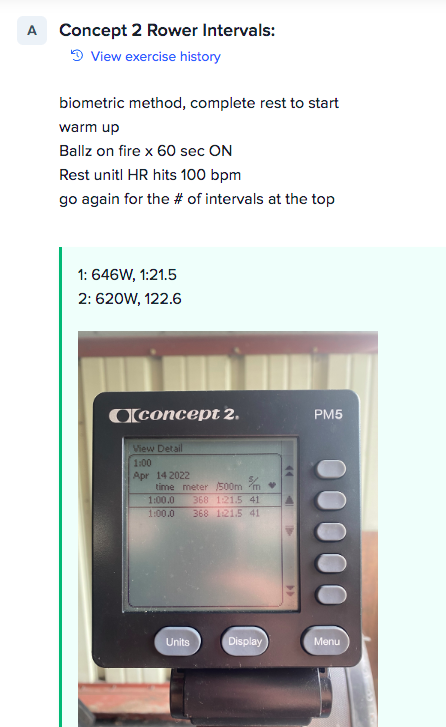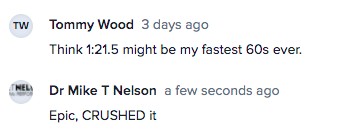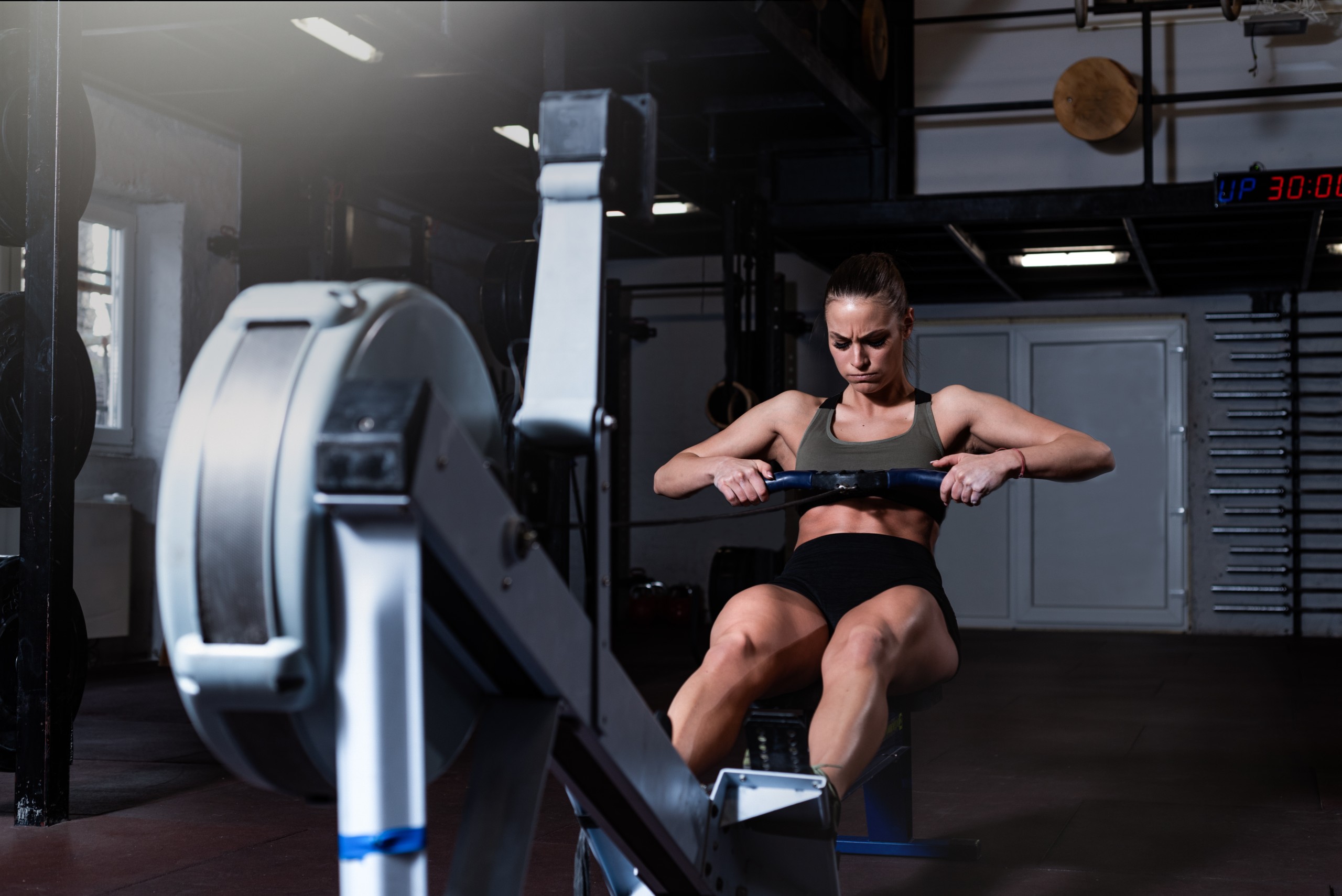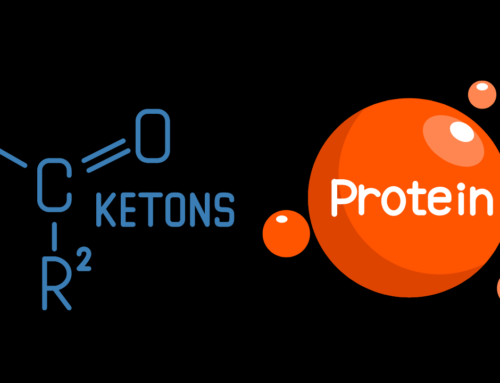The Concept 2 rower is the perfect tool for some hideous high-intensity interval training (HIIT); just ask my M3 online clients.
Out on the ole internetZ, everyone goes bonkers over doing interval work. And for good reason, intervals/HIIT when done correctly has a ton of benefits.
However, most make a massive mistake when they do their HIIT. They are easy to spot based on their IG post of “Crushed myself doing HIIT for 60 minutes.”
Newsflash Brosefus, if you are doing 60 minutes of hard intervals, you are either a top rider in the Tour De France or not really keeping the quality of work high. The biggest mistake they are doing is letting their work quality suffer from one round to the next.
An indicator is how close you can match your top-end output in each session. Some falloff is expected, but keep it to a minimum.
My rough back-of-the-envelope cut-off is about a 10% drop at the most from your top round to your worst round. The beauty of using the Concept 2 Rower or Assault bike beyond being a brutal full body ravaging, is that both will give you output in terms of power (Watts).
This makes it easy to calculate your drop-off point. Here is what M3 Online client Dr. Doctor Tommy Wood had to say about it after crushing some brutal 60-sec repeats.


Rock on!

Dr. Mike T Nelson
HIIT references
1. Callahan, M.J., et al., Can High-Intensity Interval Training Promote Skeletal Muscle Anabolism? Sports Med, 2021. 51(3): p. 405-421.
2. Olea, M.A., et al., [Effects of high intensity interval training on blood pressure in hypertensive subjects]. Rev Med Chil, 2017. 145(9): p. 1154-1159.
3. Menz, V., et al., Functional Vs. Running Low-Volume High-Intensity Interval Training: Effects on VO(2)max and Muscular Endurance. J Sports Sci Med, 2019. 18(3): p. 497-504.
4. Ben-Zeev, T. and E. Okun, High-Intensity Functional Training: Molecular Mechanisms and Benefits. Neuromolecular Med, 2021. 23(3): p. 335-338.
5. Dun, Y., et al., High-Intensity Interval Training in Cardiac Rehabilitation. Clin Geriatr Med, 2019. 35(4): p. 469-487.
6. Mendes, R., et al., High-Intensity Interval Training Versus Moderate-Intensity Continuous Training in Middle-Aged and Older Patients with Type 2 Diabetes: A Randomized Controlled Crossover Trial of the Acute Effects of Treadmill Walking on Glycemic Control. Int J Environ Res Public Health, 2019. 16(21).
7. Vechin, F.C., et al., Interference Phenomenon with Concurrent Strength and High-Intensity Interval Training-Based Aerobic Training: An Updated Model. Sports Med, 2021. 51(4): p. 599-605.
8. Ryan, B.J., et al., Moderate-Intensity Exercise and High-Intensity Interval Training Affect Insulin Sensitivity Similarly in Obese Adults. J Clin Endocrinol Metab, 2020. 105(8): p. e2941-59.
9. MacInnis, M.J. and M.J. Gibala, Physiological adaptations to interval training and the role of exercise intensity. J Physiol, 2017. 595(9): p. 2915-2930.
10. Gibala, M.J. and A.M. Jones, Physiological and performance adaptations to high-intensity interval training. Nestle Nutr Inst Workshop Ser, 2013. 76: p. 51-60.
11. Cochran, A.J., et al., Intermittent and continuous high-intensity exercise training induce similar acute but different chronic muscle adaptations. Exp Physiol, 2014. 99(5): p. 782-91.
12. Gillen, J.B. and M.J. Gibala, Is high-intensity interval training a time-efficient exercise strategy to improve health and fitness? Appl Physiol Nutr Metab, 2014. 39(3): p. 409-12.
13. Little, J.P., et al., A practical model of low-volume high-intensity interval training induces mitochondrial biogenesis in human skeletal muscle: potential mechanisms. J Physiol, 2010. 588(Pt 6): p. 1011-22.
14. Burgomaster, K.A., et al., Similar metabolic adaptations during exercise after low volume sprint interval and traditional endurance training in humans. J Physiol, 2008. 586(1): p. 151-60.
15. Burgomaster, K.A., et al., Six sessions of sprint interval training increases muscle oxidative potential and cycle endurance capacity in humans. J Appl Physiol (1985), 2005. 98(6): p. 1985-90.

Dr. Mike T Nelson
PhD, MSME, CISSN, CSCS Carrick Institute Adjunct Professor Dr. Mike T. Nelson has spent 18 years of his life learning how the human body works, specifically focusing on how to properly condition it to burn fat and become stronger, more flexible, and healthier. He’s has a PhD in Exercise Physiology, a BA in Natural Science, and an MS in Biomechanics. He’s an adjunct professor and a member of the American College of Sports Medicine. He’s been called in to share his techniques with top government agencies. The techniques he’s developed and the results Mike gets for his clients have been featured in international magazines, in scientific publications, and on websites across the globe.
- PhD in Exercise Physiology
- BA in Natural Science
- MS in Biomechanics
- Adjunct Professor in Human
- Performance for Carrick Institute for Functional Neurology
- Adjunct Professor and Member of American College of Sports Medicine
- Instructor at Broadview University
- Professional Nutritional
- Member of the American Society for Nutrition
- Professional Sports Nutrition
- Member of the International Society for Sports Nutrition
- Professional NSCA Member










Leave A Comment